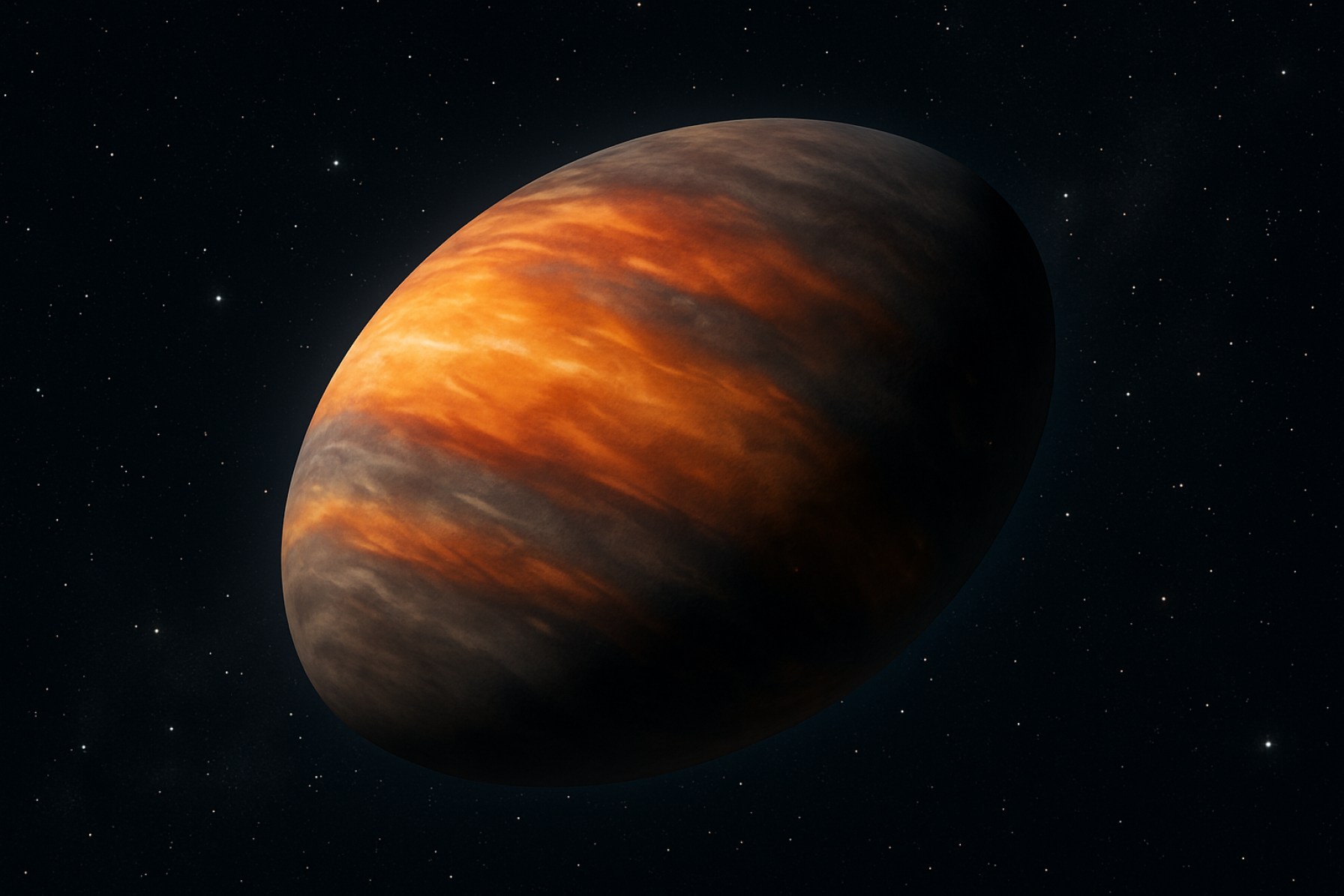NASA’s JWST Pierces a Fiery Alien Hurricane—Stunning Discovery on WASP-121b Redefines Planetary Evolution
NASA’s James Webb Space Telescope uncovers rare molecules and wild atmospheric shifts on exoplanet WASP-121b, shaking up planetary science.
- Distance: 900 light-years from Earth
- Temperature: Day side may hit 3,000°C
- Orbit: Circles its star in just 30 hours
- Discovery Tool: NASA’s James Webb Space Telescope
Scientists have unlocked an exoplanet mystery with the help of the powerful NASA James Webb Space Telescope (JWST). This time, the findings challenge everything we thought we knew about angry, ultra-hot “hot Jupiters” and their tempestuous skies.
WASP-121b isn’t just another exoplanet. Orbiting its star faster than a day passes on Earth, this gigantic, football-shaped world endures savage temperatures that could melt solid iron.
JWST’s advanced eye pierced the thick, chaotic atmosphere and exposed never-before-seen details: a bizarre mix of molecules, violent weather, and clues about the planet’s turbulent past.
How Did JWST Unlock the Secrets of WASP-121b?
Using the Near Infrared Spectrograph (NIRSpec), JWST analyzed the chemistry of WASP-121b’s swirling clouds. The findings? Astonishingly rare molecules, including silicon monoxide—the chemical fingerprint of brutal, high-speed cosmic impacts from its youth.
The planet’s atmosphere, battered by gales and searing daylight, was also found to contain methane on the far, dark side—hinting at a remarkable, up-and-down atmospheric mixing. Scientists described this as being contrary to everything we observe in gas giants like Jupiter or Saturn in our own solar system.
Q: Why Is WASP-121b So Hot… and Why Should We Care?
A: WASP-121b’s tight, 30-hour orbit around its sun superheats one side above 3,000°C, while the night side remains in shadow. This ferocious contrast drives hurricane-force winds and stirs the deep layers of gas—providing a natural laboratory for understanding how ultrahot planets evolve.
These discoveries could change how astronomers think about planet formation not just for hostile stars, but possibly even worlds where early life may have struggled to appear.
How Do Scientists Study Planets This Far Away?
Using the light from WASP-121b’s star filtered through its dense atmosphere, JWST can “see” the chemical fingerprints of its skies. By constructing sophisticated 3D climate models, scientists chart how heat, gas, and weird chemistry churn from day to night across the planet.
Results like these not only reveal the composition of alien worlds but also offer insights into how planets—including our own—change and survive under extreme conditions.
Q: What’s Next for Exoplanet Hunters?
NASA’s JWST has just begun exploring the wildest, most distant planets. Researchers are now planning more detailed scans of WASP-121b and similar worlds, aiming to solve the mysteries of their origins, weather, and bizarre atmospheres.
Other advanced telescopes, such as those operated by the European Space Agency, are joining the search, ramping up what could be the most thrilling era for planetary science yet.
How Can You Follow These Exciting Discoveries?
Stay tuned for breaking updates from leading science organizations, including NASA and the ESA. Follow their official platforms for live events, fresh images, and in-depth analyses of the next planetary shocks JWST uncovers.
Don’t miss the next cosmic breakthrough—subscribe to trusted science news, set updates for JWST missions, and spark your curiosity today!
Actionable Summary:
- Read JWST updates at nasa.gov
- Watch for new exoplanet discoveries on esa.int
- Check science news for fresh research on WASP-121b
- Explore how planetary discoveries shape our understanding of the universe
